What Is Piece-Dyed? Fabric Coloring, Process, Pros And Cons
Color is everywhere in the fabrics we see and use daily. It’s in our clothes, our bags, and even in the branding items like labels that help a product catch our eye. One very common way fabrics get their beautiful colors is through a process called “piece-dyeing”.
This article is here to give you a simple, easy-to-understand explanation of what piece-dyeing is. It’s for everyone, whether you know a lot about fabrics or just a little. Piece-dyeing is one of several textile dyeing methods you might hear about.
By the end of this guide, understanding piece-dyeing for textile products will hopefully make you feel more sure when choosing fabrics or branding for your items.
1. What exactly is piece-dyeing?
Piece-dyeing is when fabric is dyed after it has been woven or knitted into a whole piece, but before it is cut and sewn into something like a shirt or a bag. Imagine you have a big roll or a flat piece of white fabric.
With piece-dyeing, this whole fabric in bolts (large rolls of fabric) is put into a dye. Think of it like taking a whole sheet of white paper and dipping it into a tray of paint to color it all at once. This is different from methods where the threads are colored first, before being made into fabric.
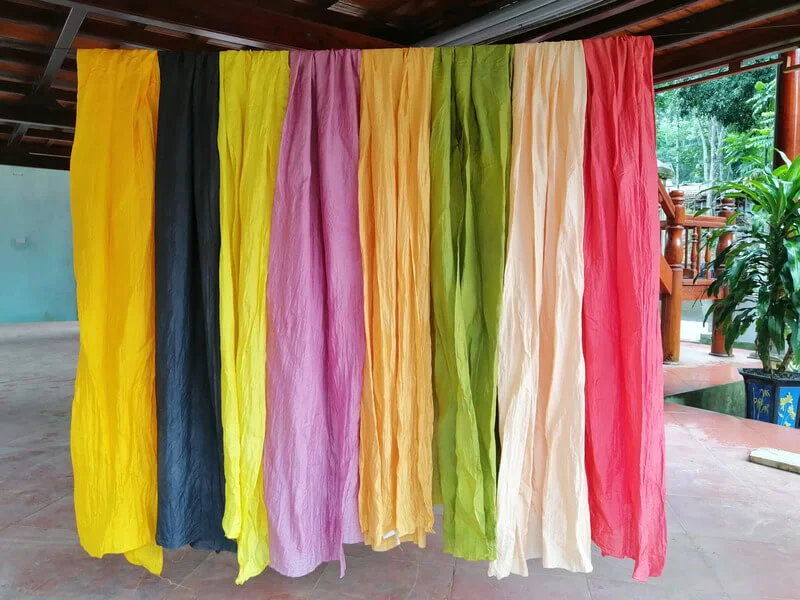
2. The piece-dyeing process
The process for piece-dyeing fabric is quite straightforward. The dyeing process usually involves these simple steps:
2.1 Preparing the fabric
Before fabric gets its color, it’s in a raw, unfinished state. This plain, undyed fabric is sometimes called greige goods (you can say it like ‘gray goods’). These greige goods need to be cleaned first.
This cleaning, sometimes called scouring, removes any natural oils, waxes, or dirt from the fabric. This is important because it helps the dye stick to the fabric evenly, so the color looks smooth.
2.2 The dye bath
Next, the large pieces of cleaned fabric are put into a special machine. This machine holds a mixture of dye (the color) and water. This mixture is called the ‘dye bath’. There are different kinds of machines for this, like jet dyeing machines that spray the dye, or others for batch dyeing (dyeing fabric in large, separate lots) where fabric is soaked. The main idea is to get the fabric completely covered in the dye.
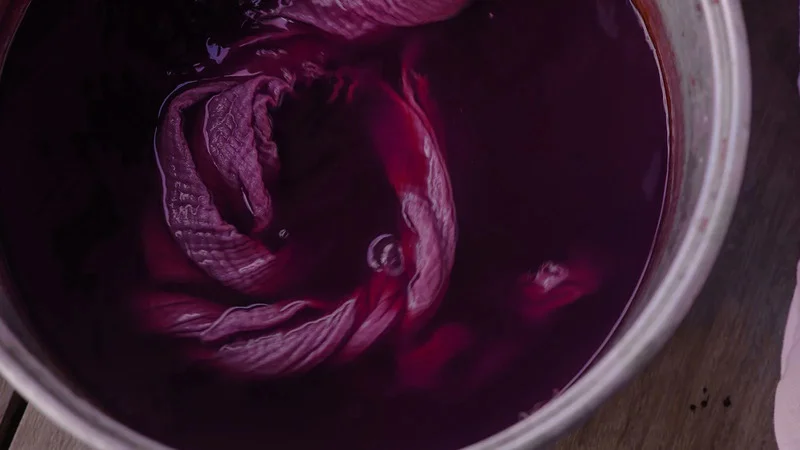
2.3 Adding color
In the dye bath, the fabric is mixed with the dyes, water, and some special chemicals. These chemicals help the color from the dye attach properly to the fabric fibers so it doesn’t wash out easily. How hot the dye bath is (the temperature) and how long the fabric stays in it are very important.
These things control how the final color looks and how well it stays on the fabric. This crucial stage—happening after weaving but before the garment is assembled—is where the fabric gets its new color.
2.4 Rinsing and finishing
After the fabric has been dyed to the right color, it is taken out of the dye bath. It is then rinsed very well with water. This washing helps to remove any extra dye that hasn’t stuck to the fabric fibers.
Sometimes, after rinsing, special finishing treatments are applied. These are like special coatings or treatments that can make the fabric softer, shinier, or even protect it from water, depending on what the fabric will be used for.
3. Good things about piece-dyeing: The advantages
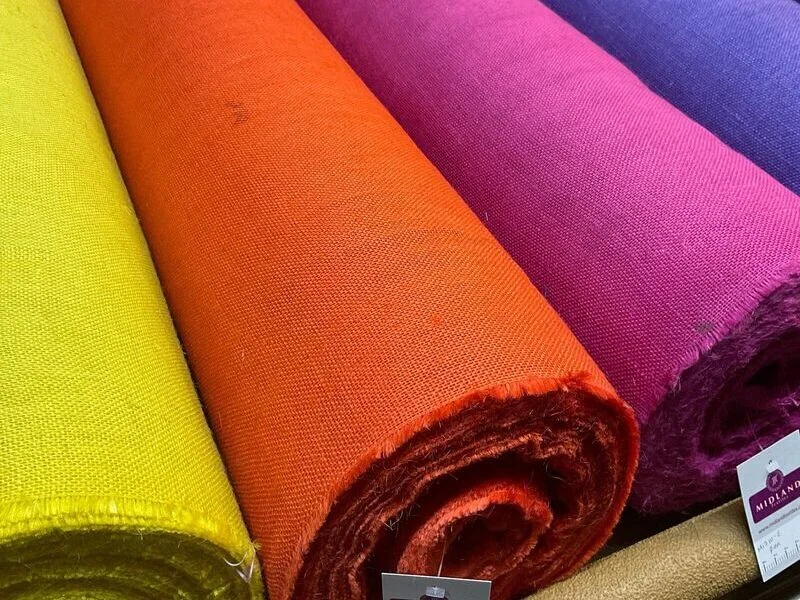
Piece-dyeing is popular for several good reasons. Here are some of the main advantages:
- Cost-effective for solid colors: One of the biggest benefits is cost-effectiveness. If a company needs a lot of fabric in just one single, solid color (like all blue or all red), piece-dyeing is often cheaper than other ways of coloring fabric. This makes it economical for bulk solid colors. For businesses, especially those thinking about the cost of piece-dyeing fabric for small business packaging or products, this can save money.
- Quick response to color trends: Fashion colors can change very fast! With piece-dyeing, companies can make the fabric first (as plain, undyed material) and then wait to see which colors become popular. They can then dye the fabric in those trendy colors just before making the final products. This means color decisions can be made later with piece-dyeing. This flexibility helps them avoid making too much fabric in a color that doesn’t sell well.
- Good color uniformity: Piece-dyeing usually gives a very even and consistent solid color fabric all over the entire piece of material. This color uniformity is great for products that need to look exactly the same from one part to another, like a plain t-shirt or sheets.
- Variety of colors possible: A wide range of different colors can be created using piece-dyeing. This makes it a good choice for many different products. It can even be used for the base fabric of clothing labels if a specific brand color is needed for the background.
4. Things to keep in mind: The disadvantages

While piece-dyeing has many good points, there are also a few things to be aware of. It’s good to know these so you can make the best choice:
- Less color penetration: Sometimes, the dye might not soak all the way through every single fiber of the fabric. This can happen if the fabric is very thick or woven very tightly. If you were to cut a thread from such a fabric, you might see that the very inside of the thread is lighter or still white. This doesn’t always matter, but if the surface of the fabric wears down over time, the color might not look as deep, affecting its color fastness (how well a color resists fading or running) or long-term appearance.
- Fabric stress: The process of dyeing involves heat, water, and the fabric being moved around in machines. This can be a bit rough on the fabric. Some very delicate or sensitive fabrics might get stretched or a bit stressed during piece-dyeing.
- Not ideal for patterns: Piece-dyeing is best for making fabrics that are one solid color all over. It’s not the right method for making fabrics with patterns like stripes, checks (like a checkerboard), or plaids (like on a traditional Scottish kilt). Those kinds of patterns are usually made by dyeing the threads (yarns) first with different colors, and then weaving them together. This is a key difference in fabric coloration techniques.
- Color matching between batches: If a very, very large amount of fabric is needed, it might have to be dyed in several different groups, or ‘batches’. Sometimes, there can be tiny differences in the shade of color between these different batches if the dyeing process isn’t controlled extremely carefully.
5. Piece-dyeing vs. other dyeing methods
It’s helpful to know how piece-dyeing is different from other common textile dyeing methods. This helps you understand why one method might be chosen over another. Let’s look at the main differences between piece dyeing, yarn dyeing, and garment dyeing:
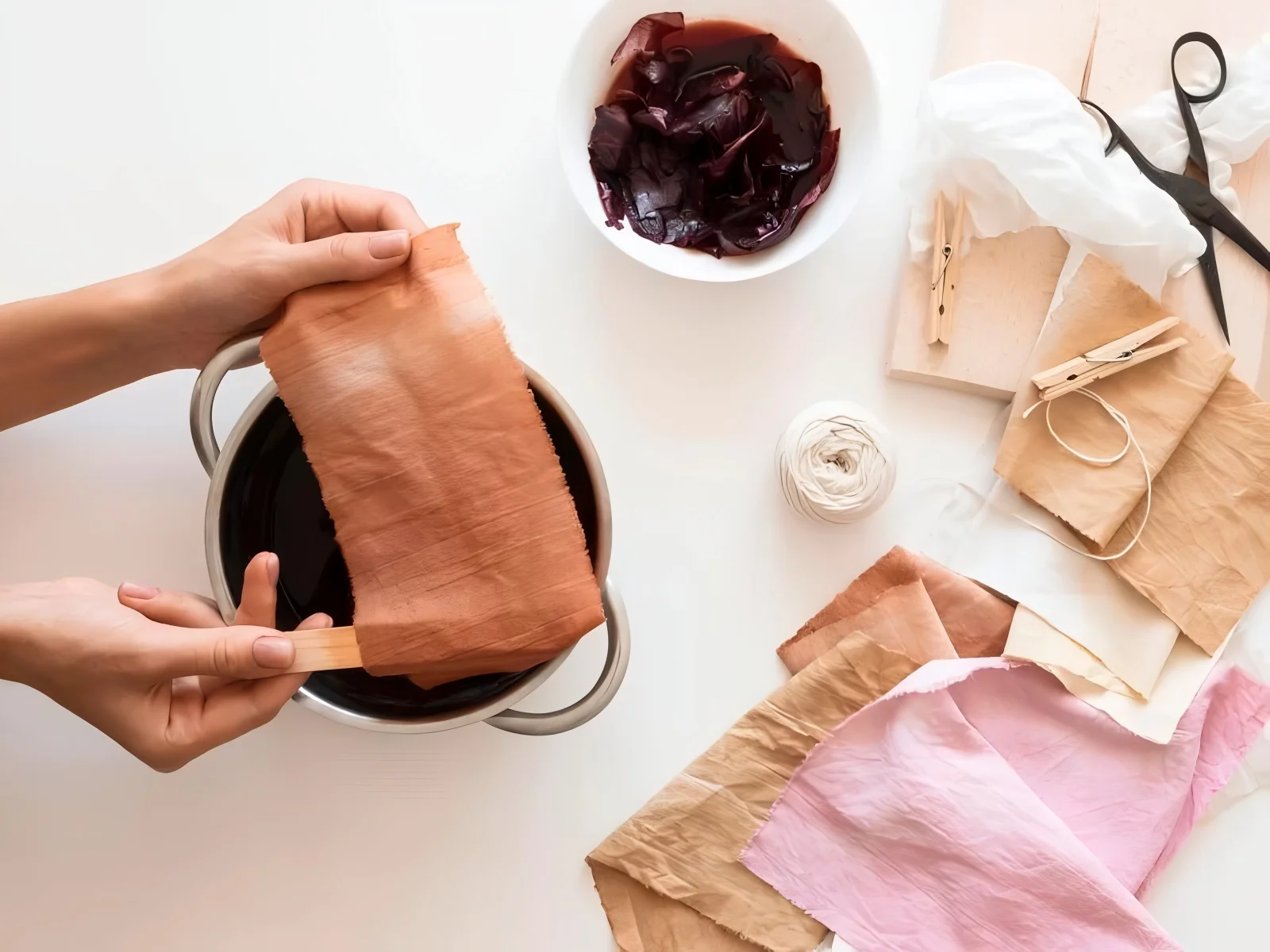
5.1 Piece-dyeing
- When dyed: As we’ve learned, fabric is dyed after it’s woven or knitted, as a whole piece.
- Best for: Solid colors, good for quick color decisions, and often cheaper for large amounts of one color.
This method is often used for the base fabric of items where you might add branding, like plain t-shirts or linings.
5.2 Yarn-dyeing
- When dyed: With yarn-dyed fabrics, the yarns (the threads themselves) are dyed before they are woven or knitted into fabric.
- Best for: Creating patterns like stripes, plaids, and checks. The color is built right into the fabric’s design because different colored threads are used.
- Cost: This is often more expensive than piece-dyeing because each color of yarn has to be dyed separately.
If you want custom brand labels with woven-in color patterns, the material used for that is likely yarn-dyed. So the choice of piece-dyed vs yarn-dyed for custom brand tags depends on whether you want a solid background color or a patterned background.
5.3 Garment-dyeing
- When dyed: Here, the finished product (like a t-shirt or a pair of pants) is dyed after it has been completely sewn together. This process is called garment-dyed.
- Best for: Giving clothes a softer, slightly worn-in, or vintage look. The colors can sometimes look a bit faded or less perfectly even, which is often the style goal. It’s also good for making quick color choices on items that are already made.
- Feel: Garment-dyed clothes often feel softer because the entire item goes through washing and dyeing.
5.4 Solution-dyeing
- When dyed: This method is mainly for synthetic fibers. The color is added to the liquid chemical mixture before it’s even made into a fiber.
- Best for: It gives excellent color fastness, meaning the color is very resistant to fading from sunlight or washing. This is good for outdoor fabrics or items that need to last a long time.
- Cost: It can be more expensive and is mostly used for specific types of synthetic materials.
Understanding how dyeing methods affect label color and feel can be useful when you are deciding on the best branding for your products.
6. When is piece-dyeing a smart choice for fabrics?
Piece-dyeing is a great option in many common situations. It is particularly smart:
- When you need large amounts of fabric in one solid color. Examples include basic t-shirts, bed sheets, simple dresses, or the linings inside bags and jackets. Common materials: cotton, polyester, linen (as piece-dyed fabrics) are often colored this way.
- When you want flexibility in choosing colors late in the production process. This is especially useful in the fashion and apparel accessories industries, as it allows companies to observe color trends before dyeing their fabric.
- When cost-effectiveness is important for items with single, uniform colors. For solid color bulk orders, it’s often the most economical choice.
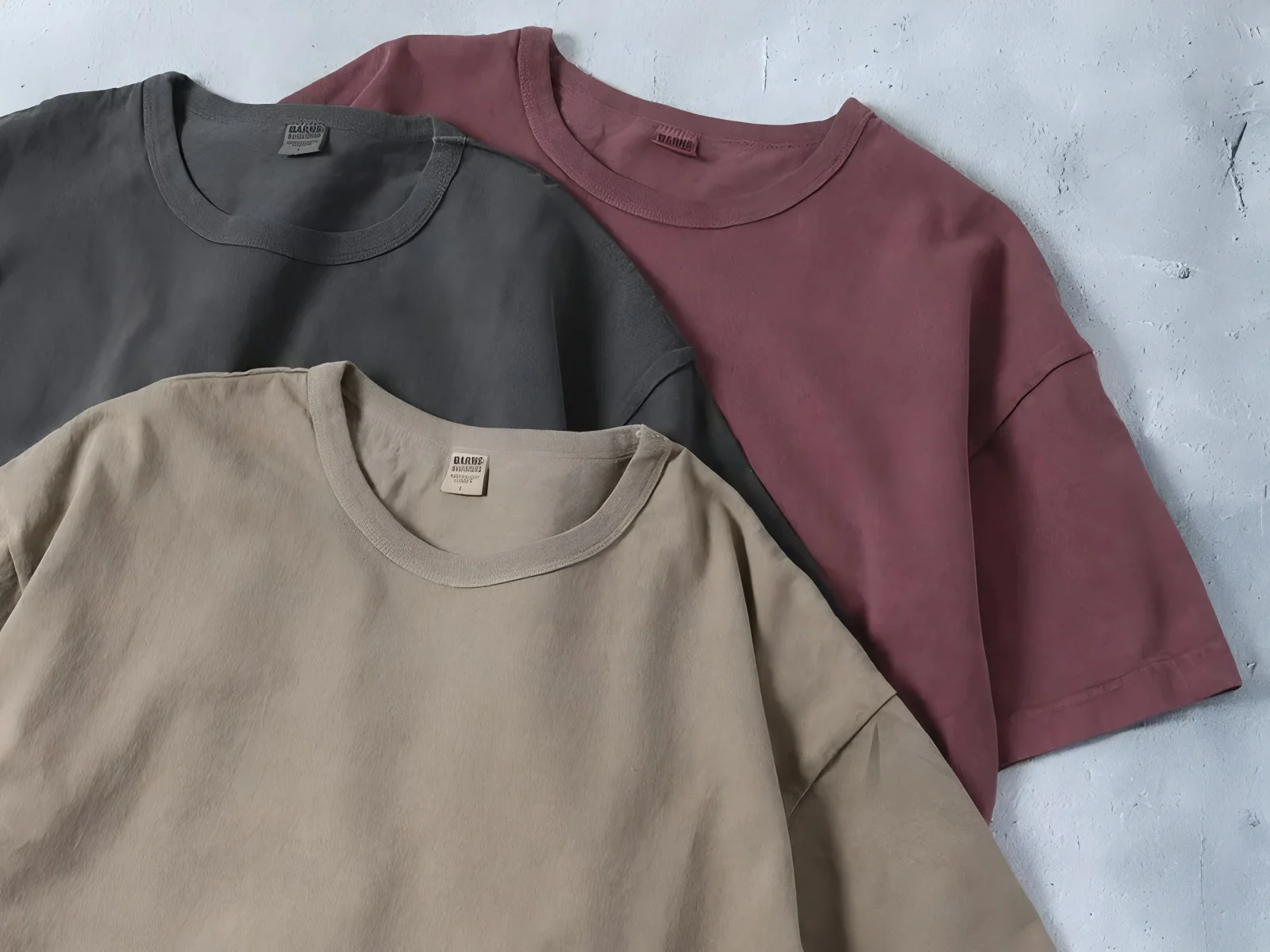
Here are some clear, everyday examples:
- Solid color cotton for casual t-shirts, shirts, and light trousers.
- Polyester linings used inside bags, coats, and other garments.
- Basic canvas fabric for tote bags or simple accessories that will be a single color.
7. Piece-dyeing and your Packlove branding items
You might be wondering how knowing about piece-dyeing is helpful when you’re thinking about branding items like labels and tags from Packlove. Here’s how it connects:
- Base material for labels & tags: The base fabric for products like our woven labels and fabric tags is often created using piece-dyeing. This process provides a solid, uniform background onto which your logo or design is then woven or printed. For example, if you want a woven label with a solid black background and a white logo, that black background fabric could be piece-dyed to get that rich, solid color. At Packlove, we understand that the base material for labels is crucial. For instance, the fabric for woven labels is often piece-dyed to achieve a solid, uniform background color before your logo is added.
- Choosing your product’s fabric: Understanding piece-dyeing helps you choose the right material not only for your main product but also for its tags. With this knowledge, you can make a more informed decision about your custom tag’s material, especially when considering a piece-dyed fabric for a specific color choice.
Whether your fabric is piece-dyed or colored in another way, Packlove can help you choose the perfect labels and tags to complement your products. Explore our woven labels now!
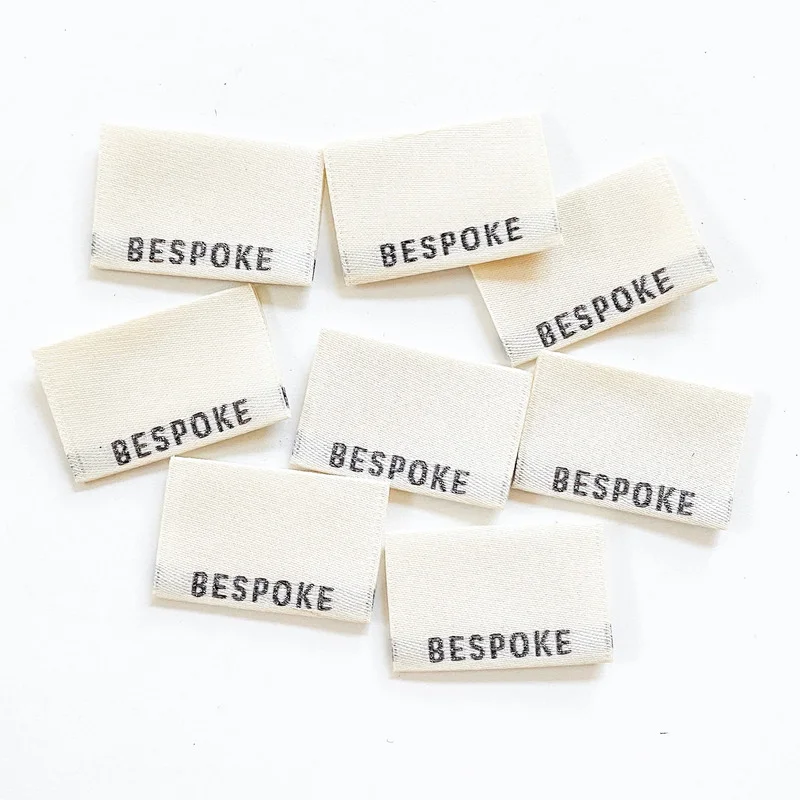
8. Frequently asked questions about piece-dyeing
8.1 Is piece-dyed fabric good quality?
The quality of a fabric depends more on things like the type of fiber used (like cotton, polyester, silk), how well it was woven or knitted, and how carefully the dyeing process itself was done. Piece-dyeing is just one way to color fabric. So, yes, piece-dyed fabric can be very good quality if it’s made from good materials and dyed with care.
8.2 Does piece-dyed fabric fade easily?
How well a fabric holds its color is called color fastness. This depends on the type of dye used, the type of fabric fiber, and how well the dyeing job was done. Good quality piece-dyeing, using the right dyes for the specific fabric, should result in good color fastness. This means it won’t fade easily with normal washing and use.
8.3 Can you piece-dye any fabric?
Most common fabrics like cotton, linen, polyester, nylon, rayon, and various blends of these fibers can be piece-dyed. However, the exact chemicals, dyes, and temperatures used in the dye bath will be different for different types of fibers to get the best color and make sure it lasts.
8.4 Is piece-dyeing environmentally friendly?
Like all dyeing methods used in big factories, piece-dyeing uses water, energy, and chemicals. The textile industry around the world is always working on ways to make dyeing processes better for the environment.
This includes using less water, finding safer chemicals, and using machines that save energy. When choosing fabrics or suppliers, it’s always a good idea to ask about their environmental practices if this is important to you.
Explore more:
Piece-dyeing means a whole piece of textile (which is fabric) is dyed after it’s woven or knitted, but before it’s cut and sewn into a final product. It’s a great way to get solid, even color on fabrics. It’s often cost-effective, especially for large amounts of fabric in one color, and it allows businesses to make quick decisions on popular colors.
Understanding a bit about how fabrics get their color, like through piece-dyeing, helps you make smarter choices for your clothes, the products you create or buy, and even how you approach your branding.
We hope this simple guide has made piece-dyeing easy to understand! Knowing these basics can be really helpful when you’re thinking about fabrics for your projects or for your brand.
Have more questions about how fabric choices can impact your branding? Contact the Packlove team!






















